Elementary Informal Education | Daily Do
How Can Properties Help Solve Problems?
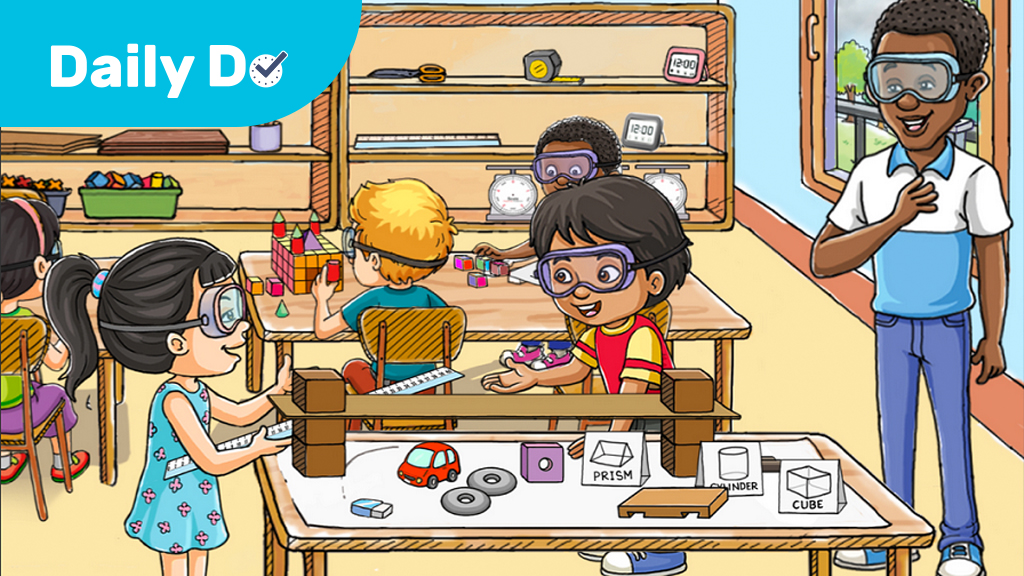
Crosscutting Concepts Disciplinary Core Ideas Engineering Is Lesson Plan NGSS Physical Science Science and Engineering Practices Elementary Informal Education Grade 2
Welcome to NSTA's Daily Do
Teachers and families across the country are facing a new reality of providing opportunities for students to do science through distance and home learning. The Daily Do is one of the ways NSTA is supporting teachers and families with this endeavor. Each weekday, NSTA will share a sensemaking task teachers and families can use to engage their students in authentic, relevant science learning. We encourage families to make time for family science learning (science is a social process!) and are dedicated to helping students and their families find balance between learning science and the day-to-day responsibilities they have to stay healthy and safe.
Interested in learning about other ways NSTA is supporting teachers and families? Visit the NSTA homepage.
What Is Sensemaking?
Sensemaking is actively trying to figure out how the world works (science) or how to design solutions to problems (engineering). Students do science and engineering through the science and engineering practices. Engaging in these practices necessitates that students be part of a learning community to be able to share ideas, evaluate competing ideas, give and receive critique, and reach consensus. Whether this community of learners is made up of classmates or family members, students and adults build and refine science and engineering knowledge together.
Today's task is a new version of "How do we describe matter?", published on April 15, 2020. The task has been revised to include an engineering design challenge for students and their families that can be completed while reading the NSTA e-Book Properties Matter or at a later time.
Introduction
Bobby and Carmen have a problem to solve! They need to design something everyone at Engineering Camp can play with using only the materials they can find around the room. Will Bobby and Carmen succeed in using science and engineering to design a solution to their problem before lunch?
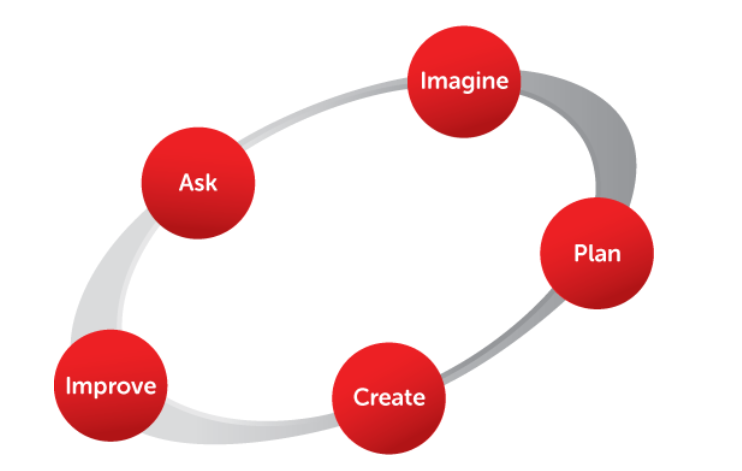
In today's task, How Do We Describe Matter?, students and their families engage in the engineering design process alongside characters in the NSTA e-Book Properties Matter. The engineering design process is a series of steps engineers follow to solve a problem. You'll notice from the image in the upper-right-hand corner (click on the image to enlarge) that the engineering design process is a cycle: Engineers repeat the steps as many times as necessary to create a solution to a problem. (In the e-Book, this cycle is presented in list form to fit the space.)
Engineers need science ideas to inform the choices they make as they imagine possible solutions individually, then plan a solution collaboratively with other engineers. Students-as-engineers in today's task first engage in science and engineering practices to make sense of the science ideas that matter can be described by its observable properties, and different properties are suited to different purposes. They then apply these ideas to engineer a solution to their problem: The campers in the story need a toy!

Preparation
Before you invite your students to read aloud or read along with you, take a few minutes to become familiar with the e-Book and suggested supporting resource(s).
- Open the Think Like a Scientist: Properties Matter e-Book. (1) Bobby and Carmen use a ruler throughout the story to measure matter. You may want to have a ruler, measuring tape, or cloth tape measure (used for sewing) available for students to give the measurements on the e-Book pages meaning. (If you have a printer, you can print this ruler for your students to use.) You could create opportunities for your students to use the ruler during the story. You might say, for example, "The block in the story is 10 inches long. Would you show me how long 10 inches is using your ruler?" (2) You might want to have materials available that are similar to the materials Bobby and Carmen use in the story, and a toy car. Your students and families might choose to imagine, plan, create, and test their own track design.
- Read the NSTA journal Science and Children article "Scaffolding for Failure: Helping Students Navigate Engineering Design Failure" to learn productive ways to talk with your students before and after they experience a design solution that doesn't meet the criteria for success.
- Open and/or print the Properties Matter Activity. Your students and their families might use the engineering design process to engage in this activity, or the activity might inspire other ideas about problems that can be solved based on the story or the student's and family's experiences around their home or community.
Properties Matter contains many interactive features that allow students to participate in the engineering design process with Bobby and Carmen. Below are more tasks that provide additional opportunities for students and their families to engage in the science and engineering practices to make sense of science and engineering ideas.
Engaging Students With the e-Book
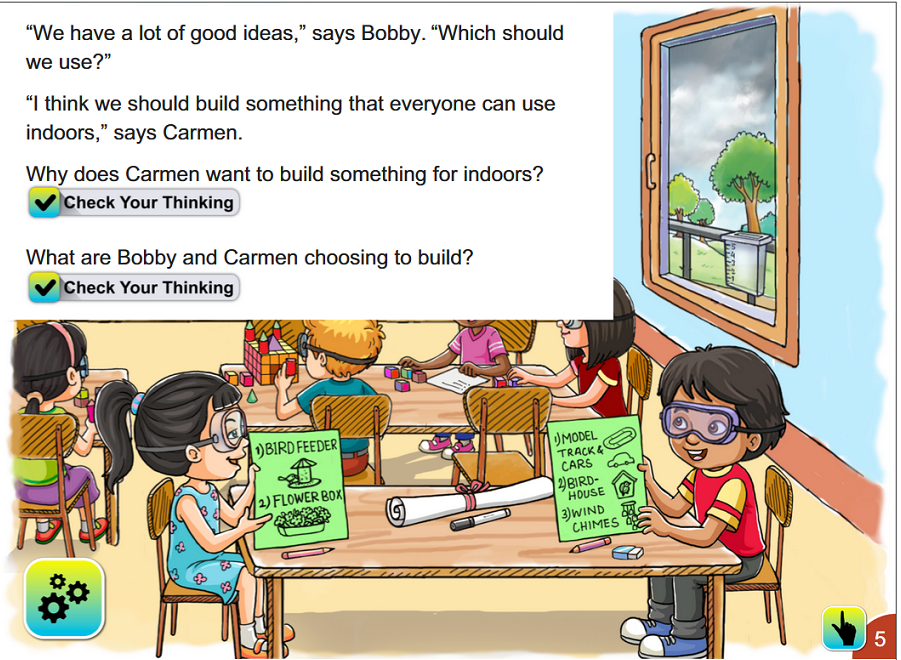
Pages 1–5. Ask students, "What is the problem Bobby and Carmen are trying to solve?" Return to page 1 if they are unsure. (Bobby and Carmen must build something that can be shared with everyone.)
Next ask students, "How will we know if Bobby and Carmen are successful in solving the problem?" (They build something and share it.) This is criteria for success.
Then ask, "I noticed three things that will limit Bobby and Carmen's choices about what to build and share (which means some of the things they wish they could build and share might not be possible). Can you find them? (Questions to ask if students have trouble.)
- They have to solve the problem by noon (page 2). What time do they have to share what they've built? Let's imagine it's 9 a.m.; can you think of things Bobby and Carmen might not be able to design, build, test, and improve in only 3 hours?
- They can only use the materials in the classroom (page 3). What materials are left for Bobby and Carmen to use in their designs? Could they use string? Why not? Could they use rubber bands? Why not?
- They need to build something that can be used indoors because it looks like rain (page 5). Why does Carmen want to build something to use indoors?
These are the constraints, or what limits ideas for a solution.
Carmen and Bobby choose to build a track for toy cars. Students and families may choose to design and build their own toy-car track.
Note: Consider reading through page 10 and allowing students to observe the properties of the available materials, then returning to page 6 to brainstorm possible solutions.
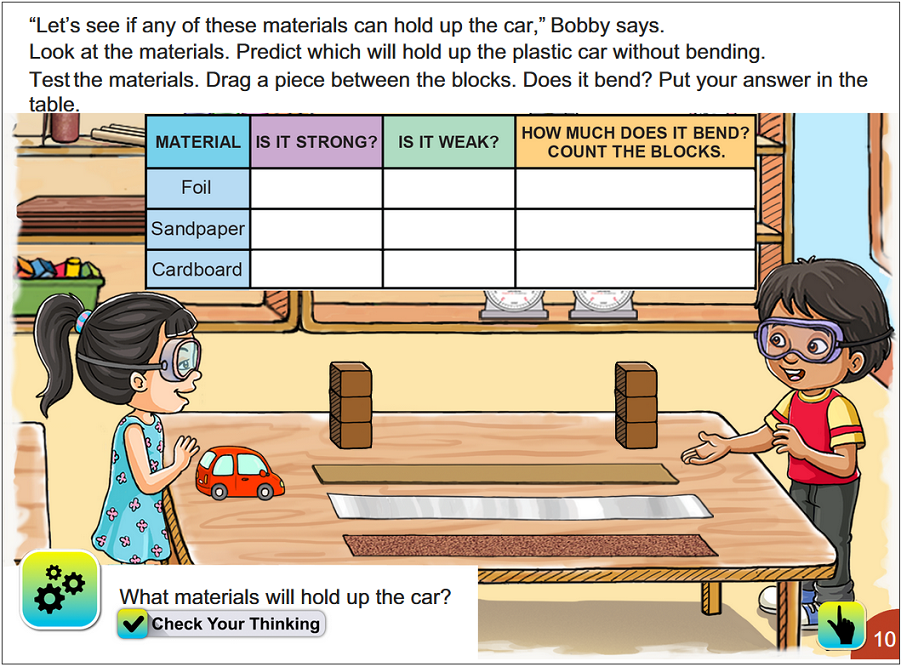
Page 10. Gather available materials that are the same or similar to the materials Bobby and Carmen are observing in the story (you may choose to add materials students and families could use if they are designing and building a track at home). You may also want to have a ruler (and kitchen scale, if one is available) ready. Students can record their observations in the What are all the ways we describe matter? table or use it as a guide when recording observations on blank paper.
Ask your students to choose one of the materials, then ask, "What are all the ways we can describe this material?" Allow students to look, feel, listen, and smell the material and begin describing it on their own.
When students run out of ways to describe the material, you might prompt them to consider the following properties:
- color
- size
- shape
- weight (Is it heavy or light?)
- flexibility (Is it stiff or bendable?)
- transparency (Can light pass through, or does the material block light?)
- texture (Is it smooth or rough?)
- solid or liquid
- stretchiness
When students have finished describing the material, ask, "How could we add more detail to the descriptions? For example, how big is big?" (Measure the material.) Other properties students might quantify are weight (kitchen scale) and stretchiness (comparing material samples of the same size—paper, plastic wrap, aluminum foil—by measuring how wide they stretch).
Next, ask students how they could change the shape of the material (cut, bend, twist, fold, etc.). This may help students think about the many different ways they might use the material in a design.
Finally, ask students how they might use the material in the design of a track (hold things together, make the track stronger/stiffer, etc.).
Complete this task for other materials your students are considering to use to build a track.
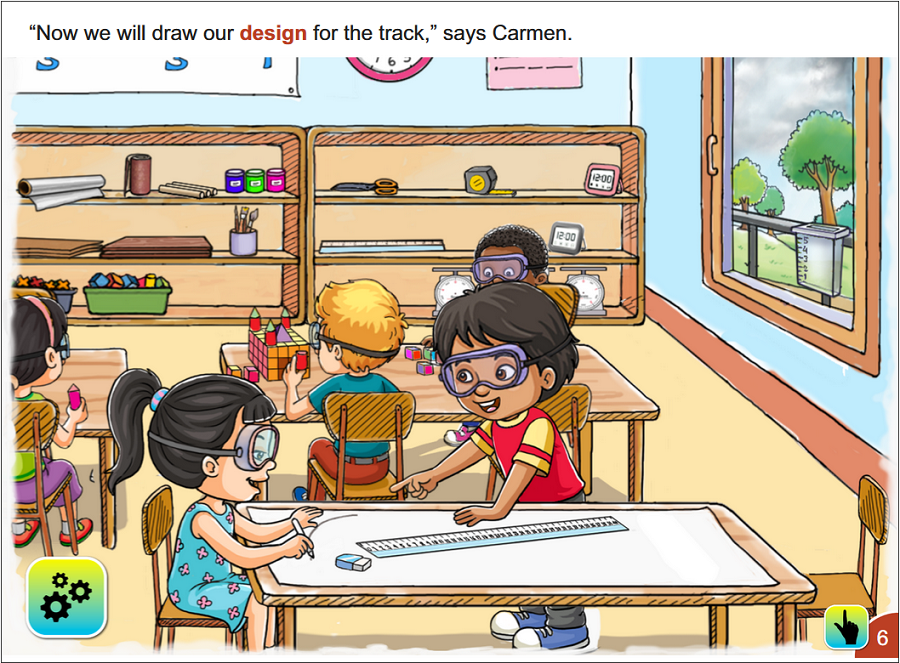
Return to page 6. Ask your students to brainstorm their own designs for a toy-car track. (They can use the same materials Bobby and Carmen are using or the materials you or their families have provided.) Students can draw and label (with assistance, if necessary) their track designs on the My Ideas for a toy-car track worksheet, or use it as a guide to draw their designs on blank paper.
Note: You may want to include additional criteria for success, such as 1) the car must stay on the track; (2) the track must have one hill; (3) the track must have a bridge, etc.
Tell students you will give them four (or more) minutes in the Alone Zone to brainstorm. Encourage them to brainstorm at least two different designs. This helps students (1) remain flexible in their thinking and open to collaborating on a group design that may incorporate all, some, or none of their design features; and (2) understand that more than one solution to a problem is always possible.
As students brainstorm ideas and begin to draw their designs, ask, "What property does this material (point to student's drawing) have that would make it a good track/hill/guard rail/bridge/etc.?"
Ask students to share their designs with a partner or a small group consisting of peers or family members. Once students have shared their designs, give them the Our group's plan for a toy-car track worksheet or a blank piece of paper. Ask students to use their brainstormed ideas to create a group plan for a toy-car track. Asking students to draw their group design on the worksheet or blank paper contributes to group buy-in with the design even if not all students' design features have been included.
As students work toward consensus on their group's designs, ask, "What property does this material (point to student's drawing) have that would make it a good track/hill/guard rail/bridge/etc.?"
At this point in the story, you may choose to pause reading and allow students to create, test, and improve their track design. If a toy car is not available, you might use a marble or a small ball on the track.
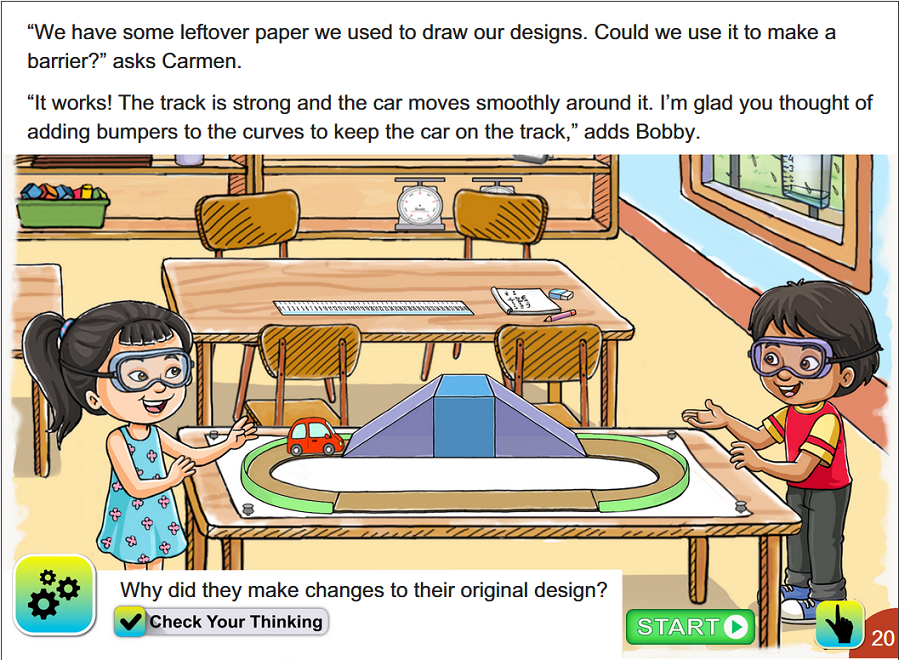
Page 20. If students (and their families) have designed and/or built, tested, and improved a track, ask them to compare their design to Bobby and Carmen's design. (What's similar? What's different?)
Ask students, "Is there more than one way to successfully design a toy-car track? Why do you say so?"
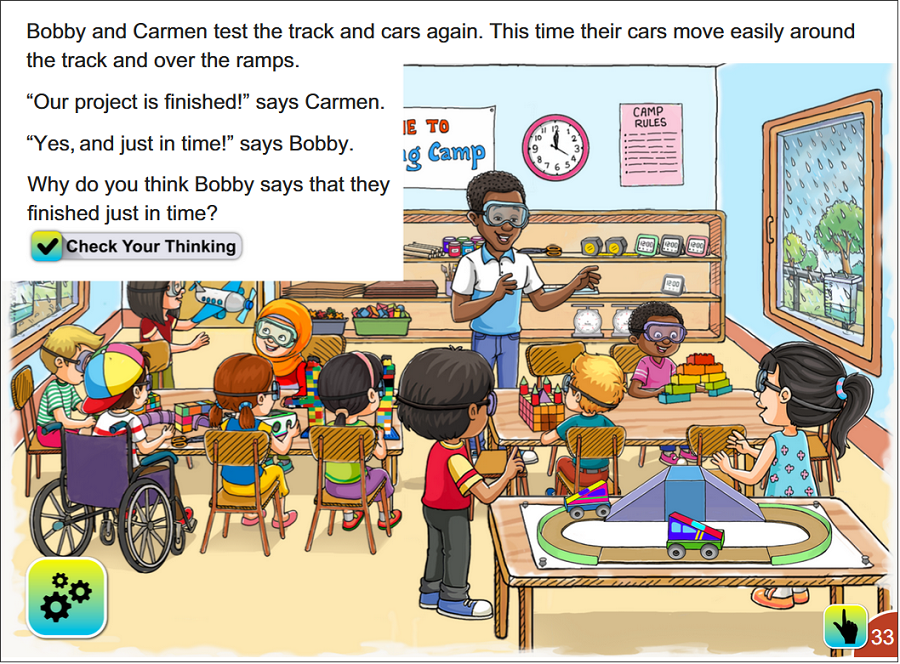
Page 33. Ask students to individually reflect on their group's final design. Share the Reflecting on our group's design worksheet with students or provide blank paper and the prompts.
- Was your design successful? How do we know if a design is successful? (how well it meets the criteria for success)
- What is one thing you really like about your design? Even if the design was unsuccessful, students can identify a design feature that they like/are proud of that might become the basis of an improved design.
- How would you improve your design if you had more time or different materials? Engineers are always seeking to improve designs even when the design is successful.
NSTA Collection of Resources for Today's Daily Do
NSTA has created a How Can Properties Help Solve Problems? collection of resources to support teachers and families using this task. If you're an NSTA member, you can add this collection to your library by clicking Add to My Library, located near the top of the page (at right in the blue box).
Check Out Previous Daily Dos From NSTA
The NSTA Daily Do is an open educational resource (OER) and can be used by educators and families providing students distance and home science learning. Access the entire collection of NSTA Daily Dos.


